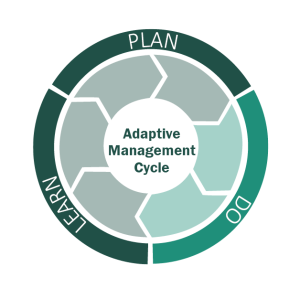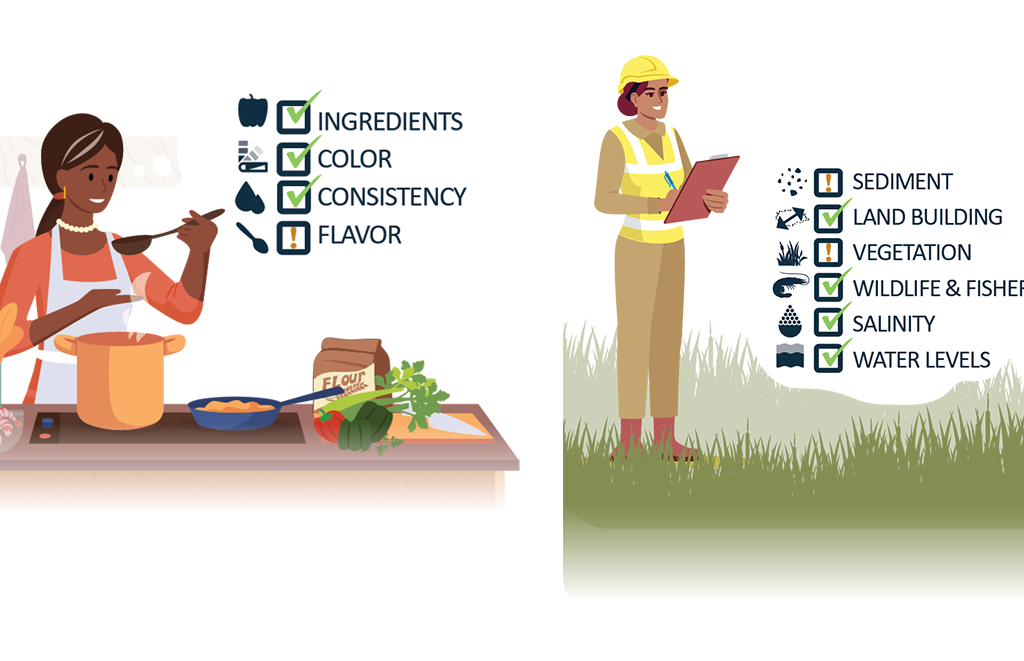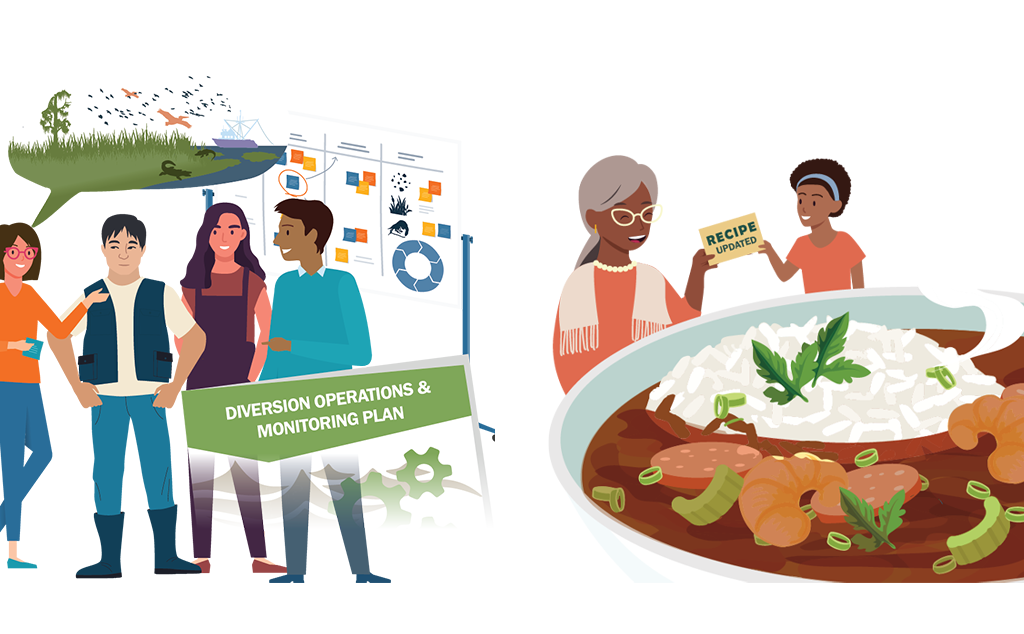Getting the Recipe Right: How Adaptive Management Can Help Optimize Diversions
As the weather begins to cool down in Louisiana, there is no better time to talk about everyone’s favorite dish: a nice warm bowl of gumbo. Whether your favorite is seafood or chicken and sausage, several steps go into perfecting a gumbo recipe.
“Coastal restoration” might not immediately come to mind when you think about a perfect gumbo. But in reality, perfecting the operation of Louisiana’s sediment diversions is a lot like getting a classic gumbo recipe tried, true, and as close to optimal as possible. Using a process called “Adaptive Management,” diversions project managers employ an ongoing cycle of assessing and adjusting to ensure the project is operated most effectively.
With the recent release of the Final Environmental Impact Statement and the Louisiana Trustee Implementation Group’s final restoration plan for the Mid-Barataria Sediment Diversion, it is more important than ever that stakeholders along the coast truly understand what operating the diversion looks like – and what it doesn’t.
Using a cyclical process of planning, doing, learning and repeating, project managers will continuously observe, gather data, analyze and readjust operations of the diversion to build new land and sustain nearby wetlands. Here’s what that looks like in practice:

To start, the planning step involves assessing what is needed and designing projects to achieve success. Cooking gumbo requires pulling out the family recipe that has the necessary ingredients, steps and notes on what to look for when cooking. For sediment diversions, planning involves decision-makers planning how to build a working, beautiful delta.

Next, comes the doing phase. Here is where project managers put the plans into motion and monitor changes to track project outcomes. “Doing” gumbo requires us going to the store to get groceries, cooking it up and taste testing it along the way. For sediment diversions, “doing” involves building and operating diversions and monitoring their effects along the way.

Finally, the learning phase is about evaluating results and adjusting as needed. For the gumbo chef, this means serving to friends and family to see how they like it, collecting feedback, and improving the recipe over time. With Adaptive Management, managers apply new information from monitoring to adjust operations over time to achieve the best results.
Want to learn more? Check out “What’s Cookin’ on the Louisiana Coast?”